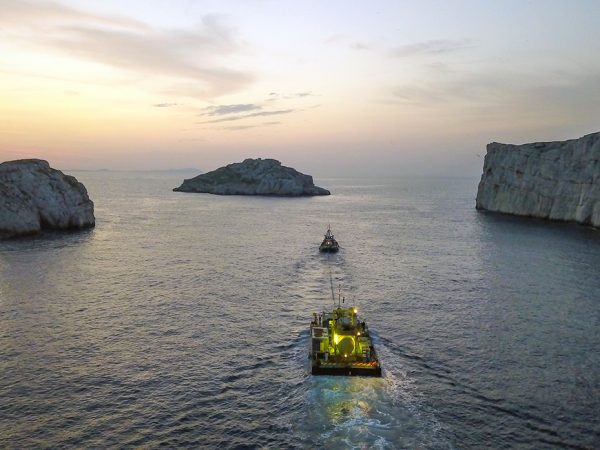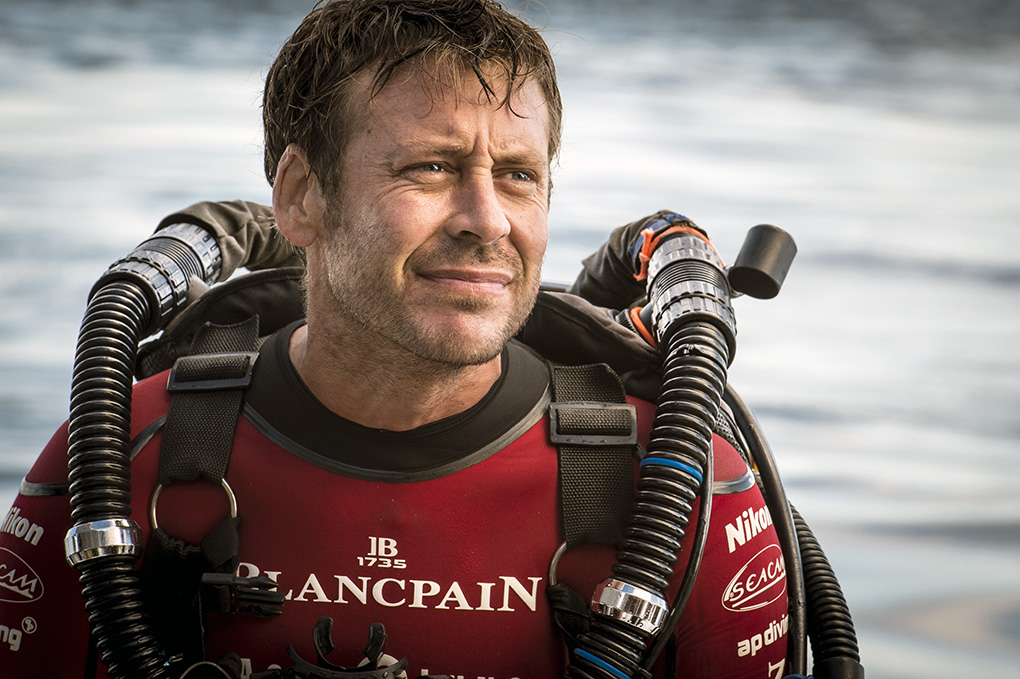7 July 2021
Gombessa 6: Cap Corse
The new Gombessa expedition began on 1 July.
After Gombessa 5: Mediterranean Planet in July 2019, the “Gombessa 6: Cap Corse ” expedition, led by Laurent Ballesta and the Andromeda Oceanology team, is once again dedicated to the Big Blue. This new adventure to discover the deep sea, which began in May, is supported by the Principality of Monaco, the Prince Albert II of Monaco Foundation and Monaco Explorations. The final phase began on 1st July and is being conducted from the bathyal station installed on the INPP barge, from which the four Aquanauts of Gombessa 6 will explore the deep sea for 18 days in saturation. It will end on Tuesday 20 July 2021 in the port of Monaco, where the Gombessa 6 flotilla will dock after a two-day crossing from Cap Corse. During these two days of sailing, the divers will decompress inside the bathyal station.
In the meantime, new and exciting pages of scuba diving and exploration of the Mediterranean will have been written.
Unlocking the secrets of Cap Corse...
The Gombessa expeditions aim to bear witness, through innovative diving methods, to the inaccessible mysteries of the underwater world. The secret waters of Cap Corse and the eastern coast are full of them… The essential motivations of this new expedition, Laurent Ballesta and his companions draw them from the two major objectives they have set for themselves in this new adventure:
– The first is to better understand, and then better preserve, the last population of angel sharks in the French Mediterranean, the now endangered sharks that gave their name to the Baie des Anges in Nice,
– The second is to solve the scientific enigma of the origin and diversity of deep coralligenous “atolls”.

The deep-sea atolls...
The most attractive thing under the sea is not the beauty but the mysteries... When I saw these strange sunken atolls, I was hallucinating, it was science fiction. I thought I was descending on the Nazca lines.

The interest of deep diving
The interest of deep saturation dives from the bathyal station, tested in the summer of 2019 during the Gombessa 5 expedition, makes it possible in July 2021 to exploit the possibilities offered by extended dive times to make progress in solving the scientific enigma of the origin, formation, and diversity of these deep coralligenous atolls off Cap Corse. What do these deep circular formations hide? The hypothesis of their origin, linked for example to gaseous formations, remains to be confirmed. Gombessa 6 should provide new answers…
Sonar captures of coralligenous rings©Andromède Océanologie
The mystery of the rings©Laurent Ballesta_Gombessa Expeditions
Mobile turret of the bathyal station ©Laurent Ballesta. Andromeda Oceanology, GOMBESSA 5.
Aquanaut Thibault Rauby©Laurent Ballesta.Andromède Océanologie. GOMBESSA 5
The last angel sharks
The emblematic angel shark, officially classified as critically endangered by the IUCN, was observed and photographed by Laurent Ballesta last summer in the posidonia meadows of the eastern coast of Corsica, at a depth of 40 metres. Corsica is therefore the last known refuge for this species in the French Mediterranean. In parallel with the saturation dives, mapping tools and innovative biodiversity sampling methods are being deployed throughout this expedition to discover where the angel shark lives and the extent and size of the population in Corsica.
Since 14 December 2018, when the 3rd session of the Meeting of the Signatories of the Memorandum of Understanding on Migratory Sharks was held in Monaco, the angel shark has been included in the list of species that should benefit from enhanced conservation measures at the international level, particularly in the Mediterranean.
Specimen of angel shark, Squatina squatina, photographed in the Canaries in December 2020 © Magali Boussion
Sharing results
Laurent Ballesta and Julie Deter, scientific leader of the expedition, presented the study underway in Corsica and the first observations made during the International Angelfish Day on Saturday 26 June.
At the end of the expedition, all the scientific data will be used to develop a management tool for the preservation of coralligenous atolls and the conservation of the angel shark habitat in Corsica and more widely in the Mediterranean.
